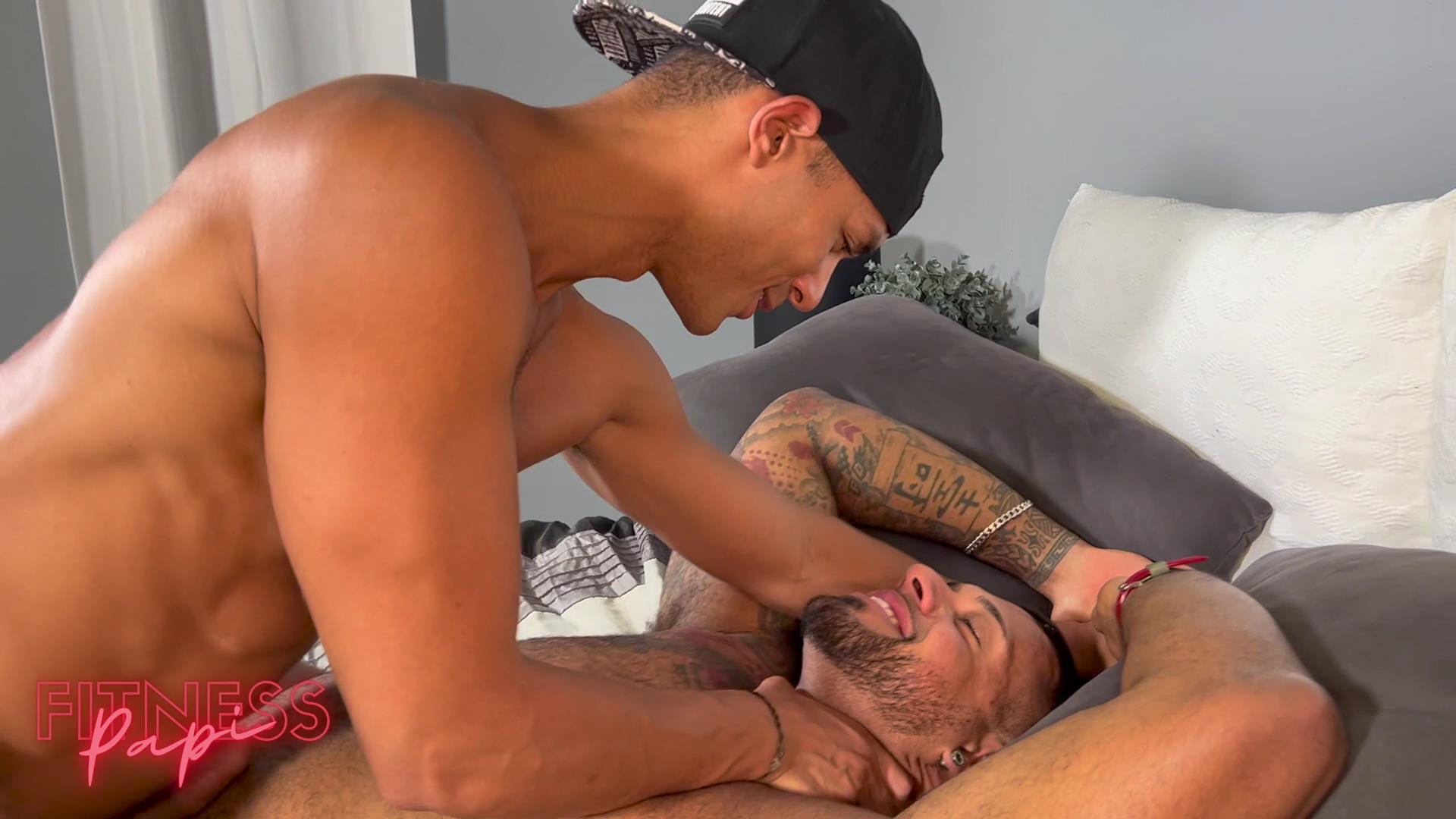
Press Play!
KING RALPHY BREAKING CODE SILENCE
Monday, February 11, 2013
SO YOU WANNA BE A DJ? PART 2 BY @DJRAP
So You Wanna Be a DJ? Part II by DJ Rap
Hi everyone and welcome to "So You Wanna Be A DJ: Part 2."
As we discussed in Part 1, the importance of choosing the right sounds, and keeping it simple is a big deal. Now getting ready to start producing a track, let's get more into the basics of how to make those sounds come alive.
I mentioned kicks last time, and making them really break through your mix. Kicks are what make your fans move to the groove -- so it's no small task selecting a kick sound and processing it properly. Firstly, choosing the sound. There are tons of libraries full of kicks and one-hits and samples out there and while some are better than others you can generally shape a great kick out of a mediocre sample with a little massaging. Again, it's important here to listen to your idols. Different types of kicks work for different styles of dance music. Electro goes great with a real knocky-heady kick, trance is great over a pulsing urgent kick, and progressive minimal house [my latest affair] can really take off with a deep-crisp kick that slices through the mix. Say we're just looking for your classic four-on-the-floor propa house kick. This sound should be stated and clean while carrying enough weight to support the rest of your mix. So it's okay to end up changing your kick halfway through producing the track if you find that once you start threading layers through your tune, the kick's gone pear-shaped. I do it all the time.
Whoo... enough on the ideology on the god that is the kick drum! [lets get technical]
Once you've chosen your sound, you want to identify what needs to happen to the kick to get it throbbing. When starting out producing your own music, it's always a good idea to find a track that has the sound you're going for and put it into your sequencer right up against your track -- called "reference mixing." Can't stress how invaluable reference mixing is. The two basic tools you're most likely going to use on your kick is a Compressor and an EQ. I EQ first, then compress, so let's talk about Q'ing.
Equalizer
If you're using a real sampled bassdrum, like from a drum set, I almost always notch out 300 Hz by at least 5 db. Real kick drums just have a 'boxiness' to them in that range that tends to kill a mix. The best way to find out which frequencies are helping your sound and which ones are ugly is to boost one band of your EQ about 6-9 db and sweep through the frequencies top to bottom, noting the areas that are warm and sweet and which areas are harsh or unnecessary. And any time you're changing a sound, keep in mind, add with eq to CHANGE a sound and cut with eq to IMPROVE a sound. [says Confucius]. And as always, this is all just means to an end, so if you find that cutting 600 Hz but 24 db gets you the sound you want then by all means cut 600 Hz by 24 db. If it sounds good, it is good. BEWARE though, if youre using cheap computer speakers, it might sound like you need to boost the low end of the kick by 15 db or more until you hear the bass... if you play this at a club it could blow the subs, which makes for very unhappy promoters and even madder club owners. That's where reference mixes can save your life.
Compressors
COMPRESSION! oooh, compression. This can be a love-hate kind of relationship. Keep in mind that kick samples might already be compressed to your liking which is great and might mean you don't have to get into this at all. But if you're a perfectionist like me you'll usually do the compressing yourself. Now compression is going to give your kick the width and the balls you'll need to knock over a dance floor and there are different theories on the best way to accomplish this. Lets just start with setting your compressor.
General rule of thumb, load up a compressor and turn the attack to the highest/longest setting and the release to the lowest/shortest. Now here's where there are different schools of thought. I like to squash the shit out of it at this point to make it very clear where the attack and release should be; so I'll set the threshold pretty low and the ratio high, somewhere around 6:1. Now bring your attack down/shorter slowly until you hear the kick lose its vigor and turn it back just a bit. And with the release, move that longer and longer until you hear it pump from one beat to the next. You want the next kick to fire right when the release from your first kick is finished. This will give you that classic pumping house kick that's oh-so-tasty. Lastly, re-adjust your threshold and ratio to settings that please you, and compliment the mix. There are now set rules here so go ahead and fly by your ears here.
I hope that you can use some of this knowledge to shape your kicks like the pros and really kill the crowds.
Arrangement
While you might not think that arrangement is a big deal, I'll tell you it's a well known fact that many DJ's won't play your record if the arrangement sucks. Plenty of DJ's, myself included, will spend hours editing their sets to flow together like butta. But that's another story. Getting your tracks to peak and breathe is going to take a bit of schooling and a lot of listening.
You're probably gonna kill me here but again... the first step to getting arrangement right is.... anyone, anyone... Bueller... Bueller... listen to your favs. The importance to listening to your favorite producers in any genre of music is huge. Simply because there is a formula and it works.
When it comes to electronica, gigantic intros are a pain in the ass to mix, as well as not putting beats at the end of the track, meaning more time in the studio editing so that the sets flow. I mean come on will it kill you to put 4 bars of beats at the end? or fade the sounds out so it ends up just being beats. Sounds like im nagging, but you have no idea how many DJ's bitch about this, myself included.
Once you've spent time and you understand the formula, a great way to cheat with this is to import the track into your sequencer and simply copy the arrangement. I personally dont do this but it might help you in the beginning. One of the great things about having experience DJ'ing is knowing how the crowd will react. This is something the bedroom producer never gets to see. For example I know that no matter what people say, big drops go down well. You only have to listen to productions by Paul van Dyk, BT, Tiesto, Deep Dish and Dubfire to know that I speak the truth. Same goes for every genre of electronic music, it simply sells records. However it's important nowadays to stay away from the old-fashioned crashes and 'ravey' breakdowns. Deadmou5 is a perfect example of how to do a perfect modern breakdown. It doesn't have to be cheesy, it just needs to be powerful. Of course there are some producers who do not want this kind of impact in their music as it would not suit the productions they are making. So it really is a judgement call on your part dependant on the production style you're going for.
Presentation
Well we have talked about the basics of making music: the arrangement, choosing the right sounds, the equipment (although I am biased to Pioneer when it comes to DJ' ing), the mix, studio setup etc... maybe it helped you, maybe it didn't. There are a thousand magazines and websites and places to go to get more info. For example Electronic Musician, Sound On Sound, EQ, Mix Magazine, are greats among a number of publications. Or if you want just want a good laugh I love "geekologie" (nothing to do with music but great for geeks). As far as websites I like: futureproducers.com is a great community for upcoming and crackin producers, acapellas4u if you need vocals to practice with/remix (don't forget you need to obtain a license if your thinking of releasing/selling anything with these vocals), or freesound.org is a great website for license free samples.
So, what's next? Well once you feel your music is ready, there are a few options available to you, but, before you put yourself "out there" for the world to see and hear lets talk about presentation. I can't tell you enough how sad it is the amount of music that goes un-listened to that I receive simply because it comes with a "smiley face" and no contact info. What are we, five? Presentation is everything and if it's done right, you will be taken seriously.
Make sure you print a label on your CD with all the relevant contact info. Pictures of yourself on the CD are a bad idea (I'm not kidding, I get those too) unless of course you look like Brad Pitt, Casey Affleck, Ryan Reynolds... ok you get the picture! A note (preferably typed on a letterhead) with a BRIEF explanation of who you are (this is why a small bio is a good idea) and why you think this label is right for your music. That's right, you have to think about where you feel your music fits... no good sending drum-and-bass to a house label like Subliminal or Impropa Talent, when you know it needs to go to Propa Talent! lol... Don't spend all your time gushing how great you think the label/DJ is, be professional at all times, after all, we are all the same, no one is god here and we are not saving lives, so polite and directly to the point is the way to go.
Lastly if you get no response, do follow up as many DJ's/labels need a gentle "prod" mainly because they are busy. I always try to give feedback whether I like the track or not, some don't bother and I am sorry as I think it would really help out the newblood. If you get no love at all, don't keep at them. Why would you want to be on a label that doesn't give a shit anyway? Hope some of you find this useful, it certainly helped me. And yes, I have sent a "smiley" CD out when I was a young raver myself, so I can say whatever I damn well like! lol.
In the meantime, head over to my website and sign-up on the mailing list to get a free track.
@fitnesspapi FITNESS PAPI & AJ SLOAN NSFW YUM CLICK HERE @kingralphy
Fitness Papi and AJ Sloan meet up after an intense sweaty workout to raw dog it. After Papi finishes, AJ pushes the *** into Papi’s mouth....

-
Promoter, DJ, M.C., Publicist, Social Networking Director, Marketing & Promotions Director. Philanthropist and Human Rights ...
.jpg)

